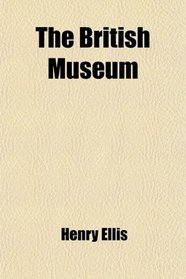Search -
The British Museum
The British Museum
Author:
Purchase of this book includes free trial access to www.million-books.com where you can read more than a million books for free. This is an OCR edition with typos. Excerpt from book: Chapter V. STATUES. Although, in the chapter of this work which relates to the early history of sculpture, several statues in the Townley Gallery have been... more »
Author:
Purchase of this book includes free trial access to www.million-books.com where you can read more than a million books for free. This is an OCR edition with typos. Excerpt from book: Chapter V. STATUES. Although, in the chapter of this work which relates to the early history of sculpture, several statues in the Townley Gallery have been... more »
ISBN-13: 9781458864192
ISBN-10: 1458864197
Publication Date: 8/1/2009
Pages: 138
Rating: ?
ISBN-10: 1458864197
Publication Date: 8/1/2009
Pages: 138
Rating: ?
0 stars, based on 0 rating




